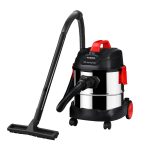Last Updated on May 20, 2024 by admin
Don’t move sentimental items that you rarely use. Consider downsizing bulky furniture to save space. Dispose of outdated electronics responsibly. Avoid duplicate kitchen gadgets for a clutter-free kitchen. Minimize excess clothing by creating a capsule wardrobe. Organize children’s items and donate the ones they no longer use. Prioritize essential books and consider digital formats. Keep only important paperwork and shred unnecessary documents. Evaluate decor based on new space and style. More tips await for a stress-free downsizing process.
Key Takeaways
– Assess sentimental items for memory preservation and categorize them carefully.
– Evaluate bulky furniture for functionality and consider space-efficient alternatives.
– Declutter outdated electronics responsibly through e-waste disposal or donation.
– Streamline kitchen gadgets by eliminating duplicates and embracing minimalism.
– Critically evaluate clothing, create a capsule wardrobe, and reduce items for packing.
Sentimental Items
When downsizing before a move, regularly reassessing your sentimental items can help streamline the process and reduce unnecessary clutter. These items hold emotional attachment and sentimental value, making it crucial to handle them delicately during the decluttering process. Memory preservation is key when deciding which sentimental items to keep or let go of. Consider which items truly hold special meaning for you and contribute to your sense of belonging.
Start by organizing your sentimental items into categories such as photographs, heirlooms, or gifts from loved ones. Evaluate each item based on its significance and the memories it holds. Keep in mind that you can preserve memories without keeping physical objects by taking photos or creating digital albums. This way, you can declutter while still holding onto the sentimental value of the items. Remember, the goal isn’t to discard everything but to curate a collection that truly reflects your most cherished memories.
Bulky Furniture
Assess the functionality and necessity of your bulky furniture to determine what to keep or discard before your move.
When evaluating bulky furniture pieces, consider their practicality in your new space. Large items like oversized sofas or massive dining tables may not fit well or serve a purpose in a smaller home.
To downsize effectively, explore storage solutions such as renting a storage unit for items you can’t part with but don’t need daily. Additionally, think about furniture alternatives that are more space-efficient, like opting for a modular sofa instead of a sprawling sectional.
Outdated Electronics
Consider decluttering outdated electronics before your move to streamline your belongings and make room for more current and functional devices. When it comes to disposing of old electronics, it’s essential to handle them with care to protect the environment and your data. E-waste disposal is crucial to avoid harmful chemicals leaching into the soil. Look for recycling options in your area to responsibly get rid of these items.
If your electronics are still functional, consider electronic donation programs or charitable organizations that accept such items. Donating old devices can benefit those in need while also reducing electronic waste. Many organizations refurbish electronics to give them a second life or recycle them responsibly.
Duplicate Kitchen Gadgets
You may have accumulated duplicate kitchen gadgets over time, cluttering your space and causing unnecessary confusion.
To streamline your kitchen tools efficiently, consider eliminating duplicate items that serve the same purpose.
Unnecessary Gadgets Duplicate
When streamlining your kitchen for a move, be mindful of duplicate gadgets that serve the same purpose. Tech clutter can accumulate quickly, so opt for organizing solutions that help declutter your space.
Kitchen gadgets are meant to simplify tasks, but having multiple items that do the same job only adds to the confusion. Take a minimalist approach by carefully assessing which gadgets you truly need and use regularly. Consider donating or selling duplicate gadgets to lighten your load before the move.
Streamline Kitchen Tools
To declutter your kitchen efficiently before a move, start by identifying and eliminating duplicate gadgets that serve the same purpose. Efficient storage is key when aiming for minimalist living. Consider keeping only essential kitchen tools that you use frequently.
For example, if you have multiple sets of measuring cups or spatulas, choose the ones you prefer and donate the extras. Streamlining your kitchen tools not only saves space but also makes it easier to find what you need. By decluttering duplicate items, you create a more organized and functional kitchen.
Embracing a minimalist approach to your kitchen gadgets can lead to a more efficient cooking experience and a clutter-free environment, which is perfect for those seeking a sense of belonging in their new home.
Eliminate Duplicate Items
Consider a thorough evaluation of your kitchen gadgets to identify and eliminate any duplicate items that may be taking up unnecessary space in your cabinets. Downsizing tips can help you make the most of your kitchen without overcrowding it with multiples of the same tool.
Start by assessing which items you truly need and use regularly. If you find that you have multiple vegetable peelers, spatulas, or measuring cups, consider keeping only the ones that are in the best condition or offer the most functionality. Minimizing duplicates not only declutters your kitchen but also ensures that you have the essentials at hand when you need them.
Excess Clothing
Start by evaluating your wardrobe with a critical eye to identify excess clothing that can be decluttered before your move. Closet decluttering is crucial in streamlining your belongings for a more organized and efficient wardrobe organization. Begin by sorting through your clothes and setting aside items that you no longer wear, don’t fit, or are out of style.
When deciding what to keep or discard, consider the frequency of wearing each piece, its sentimental value, and if it serves a practical purpose. Aim to create a capsule wardrobe with versatile pieces that can be mixed and matched easily. Donate or sell clothing that no longer serves you to reduce the number of items you need to pack and transport.
Unused Hobby Supplies
If you have excess craft materials taking up space or unnecessary equipment accumulating dust, it might be time to reevaluate your hobby supplies.
Consider parting with unused DIY project supplies that have been sitting untouched for a while. Downsizing these items can help declutter your space and make your move smoother.
Excess Craft Materials
Sorting through your excess craft materials can help streamline your hobby supplies before a move. When organizing your craft room, consider downsizing tips to declutter efficiently.
Begin by categorizing your supplies – keep what you use frequently and consider donating or selling items you haven’t touched in a while. Utilize DIY project storage solutions like clear bins, stackable containers, or wall-mounted organizers to save space and keep your materials easily accessible.
Unnecessary Equipment Accumulation
When downsizing excess craft materials, it’s common to come across unnecessary equipment accumulation, such as unused hobby supplies. Sports equipment and outdoor gear often fall into this category. While keeping these items may bring memories of past adventures, consider their practicality and frequency of use.
Evaluate if you genuinely need multiple sets of sports gear or if some items could be shared or donated. Determine if the outdoor gear is suitable for your new location or if it would be more fitting to sell or gift to someone who’ll make better use of it. By decluttering unnecessary sports equipment and outdoor gear, you can streamline your belongings and ensure you only take what truly adds value to your life.
Unused DIY Project Supplies
Consider decluttering any unused DIY project supplies by evaluating their necessity and potential for future use. Here’s a quick guide to help you decide what to do with them:
1. Storage Solutions: If you must keep some items, consider organizing them in clear bins or labeled containers to easily find what you need.
2. Upcycling Projects: Assess if you can repurpose these supplies for future craft projects or donate them to others who might use them.
3. Quality Check: Discard any damaged or expired materials that won’t be safe or effective for your projects.
4. Minimalism Mindset: Embrace a minimalist approach by only keeping supplies that truly spark joy and align with your current crafting interests.
Broken or Damaged Items
Before proceeding with your move, assess any broken or damaged items that may need to be discarded or repaired. When deciding what to do with these items, consider if they hold sentimental value or if they’re more practical to keep. Items that are repairable but have sentimental value may be worth the effort to fix, especially if they hold special memories or have sentimental significance. On the other hand, if an item is irreparable and lacks practical use, it might be best to let it go to avoid unnecessary clutter in your new space.
Separate the broken or damaged items into two categories: those that can be fixed and those that cannot. For repairable items, evaluate if the sentimental value outweighs the cost and effort of restoration. For irreparable items, focus on practicality and consider if they serve any purpose in your new home. By making these distinctions, you can streamline your belongings and ensure that only items with true value accompany you on your move.
Expired Pantry Items
Assess your pantry for any expired items that need to be removed before your move. It’s essential to streamline your pantry’s contents to avoid packing and transporting unnecessary items. Here’s a quick guide to help you declutter effectively:
1. Check Expiration Dates: Begin by going through each item in your pantry and looking at the expiration dates. Dispose of any products that have passed their expiration date to prevent food poisoning and ensure you only keep safe items.
2. Organize Meal Planning: Consider creating a meal plan based on the non-expired items in your pantry. This can help you utilize what you have before the move and minimize food waste.
3. Donate Unexpired Items: If you have non-perishable items that are still within their expiration dates but you no longer need, consider donating them to a local food bank or shelter to reduce the number of items you need to pack.
4. Update Shopping List: Make note of any pantry staples you’ll need to restock after the move. This will help you plan your grocery shopping efficiently once you settle into your new home.
Outgrown Childrens Items
To declutter effectively before your move, sort through your outgrown children’s items. Start by organizing toys, considering a toy rotation to keep favorites while reducing clutter. Donate or sell toys that are no longer played with to make space for new memories in your new home.
Next, tackle seasonal clothing. Keep only what fits your children currently and donate or sell the rest. Baby gear is another area to downsize. Evaluate what’s essential and in use, and pass on items that are no longer needed.
When it comes to kids’ artwork, select a few sentimental pieces to keep and create a digital or physical scrapbook to preserve the memories without the bulk. By decluttering these outgrown children’s items, you can streamline your move and create a fresh start in your new space, free from unnecessary belongings that no longer serve a purpose.
Unread Books or Magazines
When tackling your unread books or magazines before a move, start by prioritizing essential reading materials that you truly intend to read.
Consider converting physical copies to digital formats or investing in digital subscriptions to reduce the number of physical items you need to move.
This approach will help you streamline your collection and make the downsizing process more manageable.
Prioritize Essential Reading
To start decluttering your reading materials, identify the essential books or magazines you truly want to prioritize before your move. When it comes to minimalist living and essential possessions, the task may seem daunting, but with a clear plan, you can streamline your reading collection efficiently.
1. Select Favorites: Choose books or magazines that hold sentimental value or have significantly impacted you.
2. Consider Relevance: Prioritize materials that align with your current interests or goals.
3. Evaluate Rarity: Keep items that are hard to find or are valuable editions.
4. Review Unread Piles: Be honest about what you realistically plan to read in the near future.
Consider Digital Subscriptions
Consider exploring digital subscriptions for your unread books or magazines as a convenient way to reduce physical clutter before your move. Digital decluttering through subscription management allows you to access a vast array of reading materials without the need for physical storage.
By opting for virtual storage and cloud organization, you can enjoy your favorite reads on-the-go while eliminating the need to pack and transport bulky collections. This approach not only helps streamline your possessions but also provides a more eco-friendly alternative to traditional paper-based subscriptions.
Take advantage of the ease and accessibility of digital subscriptions to lighten your load and simplify your move. Embrace the benefits of virtual reading to declutter and organize your reading materials efficiently.
Old Paperwork and Documents
Sorting through old paperwork and documents can be a daunting task, but with a systematic approach, you can streamline the process efficiently. To make this task more manageable, follow these steps:
1. Shred Confidential, Outdated Paperwork: Start by going through all your old documents and identify any confidential or outdated paperwork that you no longer need. Shred these to ensure your sensitive information remains secure.
2. Organize Important, Current Documents: Separate important and current documents from the pile. These may include items like passports, medical records, or financial statements. Keep these well-organized for easy access.
3. Scan and Digitize: Consider scanning important documents and storing them digitally. This can help reduce the physical clutter while ensuring you still have access to important information when needed.
4. Dispose Responsibly: Once you have sorted through everything, dispose of the unnecessary paperwork responsibly. Recycle what you can and shred anything with personal information before discarding it.
Oversized or Impractical Decor
When downsizing before a move, evaluate oversized or impractical decor items that may not fit well in your new space. Oversized art and furniture can be stunning pieces but might overwhelm a smaller home. Consider the scale of your new rooms and whether these pieces will complement or overcrowd the space. If they don’t serve a practical or aesthetic purpose in your new home, it might be time to part ways with them.
Impractical knick knacks and decor items may hold sentimental value, but if they take up unnecessary space or clash with the style of your new place, it could be worth reevaluating their importance. Choose items that truly bring you joy and enhance the ambiance of your home, rather than collecting dust on shelves.
Conclusion
In conclusion, downsizing before a long-distance move can be a daunting task, but by letting go of sentimental items, bulky furniture, outdated electronics, duplicate kitchen gadgets, excess clothing, outgrown children’s items, unread books, old paperwork, and oversized decor, you can make the process much smoother.
Remember to prioritize what’s truly important and necessary for your new space, and leave behind what no longer serves a purpose in your life.
Happy moving!
Apart from that, if you are interested to know about 7 Tricks to Make Moving Day a Breeze then visit our Business category.


























